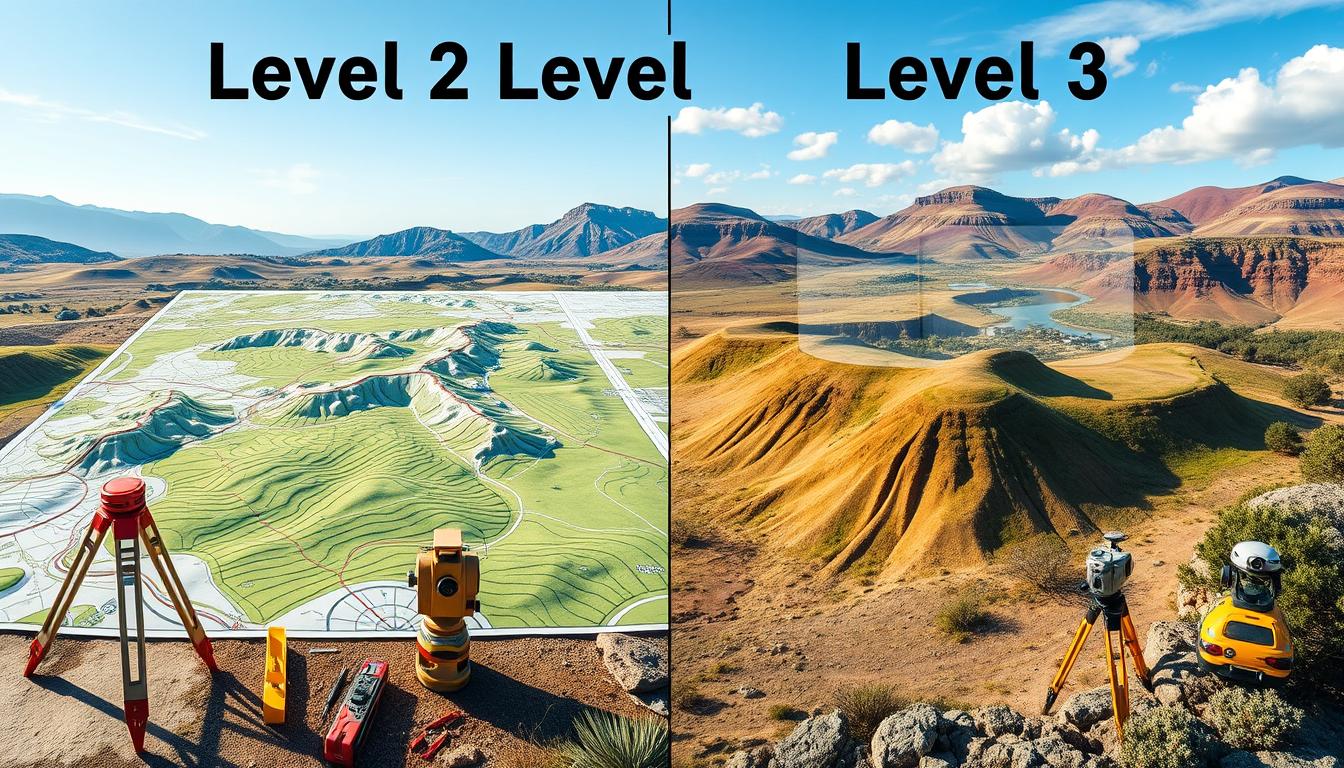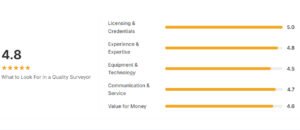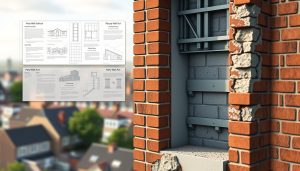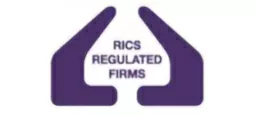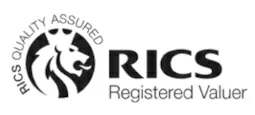In the UK, discerning the distinction between Level 2 and Level 3 surveys is imperative for prospective homeowners. The Royal Institution of Chartered Surveyors (RICS) introduced the Home Survey Standards in 2021. These standards aim to provide clarity and consistency in surveying practices. A Level 2 survey is generally recommended for most properties. In contrast, a Level 3 survey is essential for older or problematic properties, underscoring the significance of understanding the nuances between these two survey levels.
Engaging with a qualified surveyor is instrumental in making informed decisions regarding property acquisition. The disparity between Level 2 and Level 3 surveys profoundly influences a buyer’s comprehension of a property’s condition and inherent risks. This article aims to elucidate the fundamental differences between Level 2 and Level 3 surveys. It will assist readers in determining which survey aligns with their specific requirements, shedding light on the distinction between Level 2 and Level 3 surveys.
Key Takeaways
- Understanding the difference between Level 2 and Level 3 survey is vital for homebuyers in the UK.
- A Level 2 survey is suitable for most properties, while a Level 3 survey provides a more in-depth assessment for older or problematic properties.
- The Royal Institution of Chartered Surveyors (RICS) introduced the Home Survey Standards in 2021 to ensure clarity and consistency in surveying.
- A Level 2 survey offers an intermediate inspection level, while a Level 3 provides a highly detailed inspection.
- The decision for surveyors between Level 2 and Level 3 depends on property complexity, client concerns, and visible issues warranting closer examination.
- Properties over 50 years old are specially recommended for a Level 3 survey due to the heightened risk of defects and structural problems.
Understanding Property Surveys in the UK
In the realm of property acquisition, property surveys are indispensable. They enable buyers to grasp the true state of the property. The Royal Institution of Chartered Surveyors (RICS) describes a spectrum of surveys, tailored to diverse needs and property categories. Recent data reveals that 46% of home buyers experienced a transaction duration between 3-5 months. This underlines the critical role of property surveys in the acquisition journey.
A property survey uncovers latent defects and hazards, equipping buyers with essential knowledge for informed choices. The significance of CIOB, RPSA or RICS accreditation is helpful, ensuring the reliability of the assessment. The array of survey types, ranging from Level 2 to Level 3, each serves a distinct purpose and offers unique advantages.
What is a Property Survey?
A property survey entails a meticulous examination of a property’s condition, pinpointing both significant and minor flaws (though not “snagging”). It may also encompass a property valuation, aiding buyers in their decision-making process.
The Role of RICS in Property Surveys
RICS is instrumental in establishing benchmarks and protocols for surveyors. This ensures that buyers receive precise and dependable information regarding the property. RICS accreditation is a testament to a surveyor’s proficiency, instilling confidence in buyers.
Why Property Surveys Matter
Property surveys are critical as they can avert unforeseen expenses in the future. They enable buyers to identify issues promptly, facilitating negotiations or potentially leading to a decision to withdraw from the purchase. With 57% of respondents citing moving house as their most stressful life event, a detailed survey can alleviate anxiety and streamline the process.
- 41% of home buyers reported a transaction duration of 1-2 months
- Level 2 Homebuyer Reports are the most common RICS survey but not the best
- Level 3 Building Surveys are advised for more expensive properties or those exceeding 50 years of age
By grasping the importance of property surveys and RICS’s role, buyers can make well-informed decisions, averting costly blunders. Whether considering a standard property or one with unique features, a detailed survey offers invaluable insights, empowering buyers to navigate the acquisition process with assurance.
The Fundamental Difference Between Level 2 and Level 3 Survey Types
Understanding the nuances between level 2 survey and level 3 survey is essential. A level 2 survey offers a detailed examination of a property’s condition, pinpointing any critical issues that demand immediate attention. In contrast, a level 3 survey delves deeper, revealing hidden defects that might not be apparent at first glance.
The distinctions between these surveys hinge on their scope and purpose. Level 2 surveys are apt for the majority of properties, whereas level 3 surveys are more detailed, making them the preferred choice for older or unique properties. The main disparities include:
- Inspection depth: Level 3 surveys entail a more rigorous examination, encompassing the evaluation of accessible panels and concealed defects.
- Cost: These surveys are typically pricier, with costs ranging from £700 to £2,500+.
- Duration: Level 3 surveys require more time, with reports usually ready within 5 days post-inspection.
To conclude, the selection of the appropriate survey type is contingent upon the property’s age, condition, and type. Level 2 surveys are ideal for contemporary properties, whereas level 3 surveys are advisable for older or distinctive properties. By grasping the distinctions between these survey types, buyers can make well-informed decisions, mitigating unforeseen issues.
Level 2 Survey: A Detailed Overview
A level 2 survey offers a detailed examination of a property’s condition. It encompasses a visual inspection, condition ratings, and a concise summary of findings. This survey is apt for properties constructed within the last 50 years.
The survey components of a level 2 survey entail an assessment of the property’s condition, pinpointing any critical issues that could impact its value. The report will detail the property’s structure, including any dampness signs, and highlight possible problems with the roof, walls, and windows.
Key Features and Components
The primary attributes of a level 2 survey are:
- Visual inspection of the property
- Condition ratings for each property element
- Summary of findings, encompassing any significant issues
When to Choose a Level 2 Survey
A level 2 survey is the preferred choice for modern, conventional properties in good condition. It is not the best option for older or problematic properties, as it has survey limitations that may not uncover all possible issues.
Limitations of Level 2 Surveys
Level 2 surveys have limitations, including their inability to identify all possible issues, mainly in older or altered properties. For such cases, a more detailed survey, such as a level 3 survey, is often required.
| Survey Type | Suitable For | Includes |
|---|---|---|
| Level 2 Survey | Modern, conventional properties | Moderate inspection, condition ratings, summary of findings |
| Level 3 Survey | Older, larger, altered, or problematic properties | Most comprehensive inspection, detailed report, actionable recommendations |
Level 3 Survey: Comprehensive Analysis
A level 3 survey offers the most comprehensive analysis of a property, serving as a critical tool for those seeking a detailed understanding of a property’s condition. It is invaluable for assessing older properties or those that have undergone significant transformations. This survey provides a meticulous examination of the property’s framework and identifies any possible defects.
The survey benefits of a level 3 survey include a thorough inspection analysis of all accessible property areas, leading to a detailed report. Employing visual inspection and thermal imaging, this survey accurately captures the property’s condition. It categorizes identified defects by priority, highlighting urgent repairs, recommended enhancements, and non-essential but beneficial improvements.
Some of the key features of a level 3 survey include:
- A detailed inspection of all accessible areas of the property
- A thorough analysis of the property’s structure and possible defects
- A report that prioritizes defects based on urgency and cost implications
In summary, a level 3 survey offers a detailed and thorough understanding of a property’s condition. It is a vital tool for buyers aiming to make informed decisions and avoid unforeseen expenses. The comprehensive analysis provided by a level 3 survey aids in negotiating the property’s price and planning for any necessary repairs or renovations.
| Survey Type | Cost | Features |
|---|---|---|
| Level 2 Survey | £600-£1,500 | Moderate analysis of property condition |
| Level 3 Survey | £700-£2,500+ | Most detailed analysis of structural integrity and other features |
Cost Comparison and Value for Money
When selecting between a Level 2 and Level 3 survey, survey costs are a critical consideration. The pricing structure for each survey type differs significantly. Grasping these costs is essential for buyers to make well-informed decisions regarding their survey requirements.
A Level 2 survey is generally more budget-friendly, with prices ranging from £600 to £1,500. In contrast, a Level 3 survey can cost between £700 and £2,500+. The value for money of each survey hinges on the buyer’s specific needs and the property’s condition.
Here is a detailed breakdown of typical costs for each survey type:
- Level 2 Survey: £600-£1,500
- Level 3 Survey: £700-£2,500+
- Damp surveys: £500-£1,000
- Dry rot surveys: £500-£1,000
- New build snagging surveys:£700-£2,000
It’s also vital to consider any additional expenses linked to each survey. For instance, if a Level 3 survey is chosen, an extra valuation might be needed, increasing the total cost.
The decision between a Level 2 and Level 3 survey will ultimately rest on the buyer’s specific needs and budget. By comprehending the pricing structure and value for money of each survey, buyers can make informed choices. This ensures they maximise the survey costs they invest in.
Property Types and Suitable Survey Levels
The selection of a suitable survey level is contingent upon the property type. Each property category necessitates a distinct survey level, influencing the buyer’s decision-making process. For example, modern constructions might suffice with a Level 2 survey, whereas period or uniquely designed properties may necessitate a more detailed Level 3 survey.
In the UK, the Royal Institution of Chartered Surveyors (RICS) delineates survey levels and their applicability to various property types. RICS stipulates that a Level 2 survey is appropriate for structures erected within the last century. In contrast, a Level 3 survey is advised for older dwellings, listed buildings, or those in suboptimal condition.
Modern Properties
Modern constructions, typically those from the past 50 years, often necessitate less detailed surveys. A Level 2 survey might be adequate for these properties, given their relative lack of significant defects or issues. Yet, it is imperative to evaluate the property’s specific condition and any possible risks or concerns.
Period Properties
Conversely, period properties demand more in-depth surveys due to their antiquity and propensity for concealed defects. A Level 3 survey is frequently recommended for these properties. It offers a more detailed evaluation of the property’s state and identifies any latent issues or risks.
The selection of a survey level is contingent upon the property’s unique characteristics and the buyer’s specific requirements and apprehensions. By considering the property type and the requisite survey level, buyers can make an informed choice. This ensures a thorough comprehension of the property’s condition prior to acquisition.
The Survey Report: What to Expect
Upon receiving your survey report, you will encounter a thorough examination of the property’s state and any possible defects. The report contents will encompass a concise summary of the findings, condition assessments, and suggestions for additional inspections or repairs. Familiarising yourself with the survey report can empower buyers to make well-informed decisions regarding their property acquisition.
A survey report offers critical insights into the property’s condition, pinpointing any issues that could influence its value or safety. It will also present an estimated market value and rebuild cost, providing essential financial perspectives on the property. It is imperative to scrutinise the survey expectations before finalising a decision.
When examining your survey report, consider the following:
- Condition ratings assigned to various parts of the property
- A summary of findings, detailing defects, risks, and factors affecting property value or safety
- Recommendations for further investigation or repair
- Estimated market value and rebuild cost
By grasping the essence of a survey report, buyers can make more informed choices about their property acquisition. It is vital to meticulously review the report contents and align them with the survey expectations to facilitate a seamless transaction.
Making an Informed Choice for Your Property
Choosing the right survey for your property requires careful consideration of several factors. Approximately 80% of buyers opt for independent surveys before purchasing, aiming to avoid unexpected costs. Given the average mortgage loan exceeding £200,000, the importance of informed property decisions is evident.
Seeking professional recommendations from qualified surveyors is vital. They offer a detailed understanding of the property condition, identifying any defects or shortcomings.
Decision-Making Factors
When deciding, consider the property’s age, condition, budget, and future plans. About 60% of properties, including those built before 1980 or requiring significant repairs, may require a Level Three Survey. For older properties or complex structures, a Level 3 survey is advisable to uncover hidden issues.
Professional Recommendations
Professional surveyors offer expert advice, guiding you through the decision-making process. They explain the distinctions between Level 2 and Level 3 surveys, including their costs and benefits.

Common Misconceptions and Myths
In the realm of property surveys, several misconceptions and myths prevail. One widespread myth posits that new build properties do not need a Building Survey, but this is usually false, as many new build properties are wrought with defects.
Some prevalent misconceptions suggest that property surveys are unnecessary or uninformative. In reality, surveys unveil critical details about the property state and sometimes latent defects. This knowledge aids buyers in price negotiations or even in deciding against a purchase. It is imperative to distinguish between survey myths and survey facts to ensure buyers make well-informed decisions.
Recent statistics reveal that buyers typically incur an extra £5,750 in repair costs post-purchase. This underlines the significance of survey knowledge and dispelling common misconceptions. By familiarising themselves with survey myths and facts, buyers can steer clear of unforeseen expenses.
- A Level 2 Survey is suitable for most conventionally built properties
- A Full Building Survey isusually more worthwhile, especially for more expensive properties
- Independent surveys, though not legally mandated, are vital for any property acquisition
Conclusion: Choosing the Right Survey for Your Needs
When embarking on the journey of purchasing a property, the selection of the appropriate survey type is important. The choice between a Level 2 Homebuyer’s Report and a more detailed Level 3 Building Survey hinges on a thorough understanding of the differences. This knowledge empowers buyers to make a decision that resonates with their property’s specific requirements and their financial outlook.
The Level 2 Survey provides a detailed, non-invasive visual examination, concentrating on critical components such as the roof and walls. It is ideal for conventional houses, flats, and bungalows constructed from common materials. Yet, for properties that are larger, more expensive, complex, neglected, older, or of historical significance, a Level 3 Building Survey is advisable. This is to uncover any hidden defects or future issues that might arise.
The selection of the right survey is a delicate balance between the property’s condition, the buyer’s budget, and their long-term plans for the home. By consulting with professionals and considering the advantages of each survey type, buyers can navigate the property purchase process successfully. This approach helps to avoid unforeseen expenses that could arise in the future.
FAQ
What is the fundamental difference between a Level 2 and Level 3 survey?
The distinction between a Level 2 and Level 3 survey hinges on their scope and purpose. A Level 2 survey offers a moderate examination of the property condition, pinpointing any significant flaws. In contrast, a Level 3 survey delves deeper, revealing defects that may not be immediately apparent.
When should I choose a Level 2 survey?
Opt for a Level 2 survey when acquiring a relatively new property that appears sound. Yet, it’s important to note that Level 2 surveys have limitations, making them less suitable for older or complex properties.
What are the benefits of a Level 3 survey?
A Level 3 survey offers a more thorough examination of the property’s condition. It provides a detailed breakdown of the property’s structure and any hidden defects. This is advantageous for buyers seeking a detailed understanding of their property’s condition, including any risks or defects.
How do the costs compare between a Level 2 and Level 3 survey?
Level 2 surveys are generally more budget-friendly than Level 3 surveys. They offer less detailed analysis, howver. Buyers should understand the pricing structure of each survey type and any additional costs involved.
How do I choose the right survey level for my property type?
The appropriate survey level varies by property type. Modern constructions might suffice with a Level 2 survey, whereas period properties or unique structures may necessitate a Level 3 survey. Recognising the specific needs of your property can guide you in selecting the most suitable survey.
What should I expect from a survey report?
A survey report should comprehensively outline the property’s condition and any defects. Buyers should anticipate a detailed summary of findings, condition ratings, and recommendations for further investigation or repair.
What are some common misconceptions about property surveys?
Misconceptions abound, such as the notion that surveys are unnecessary or uninformative. In reality, surveys are invaluable for uncovering a property’s condition and defects, enabling buyers to make well-informed decisions.


